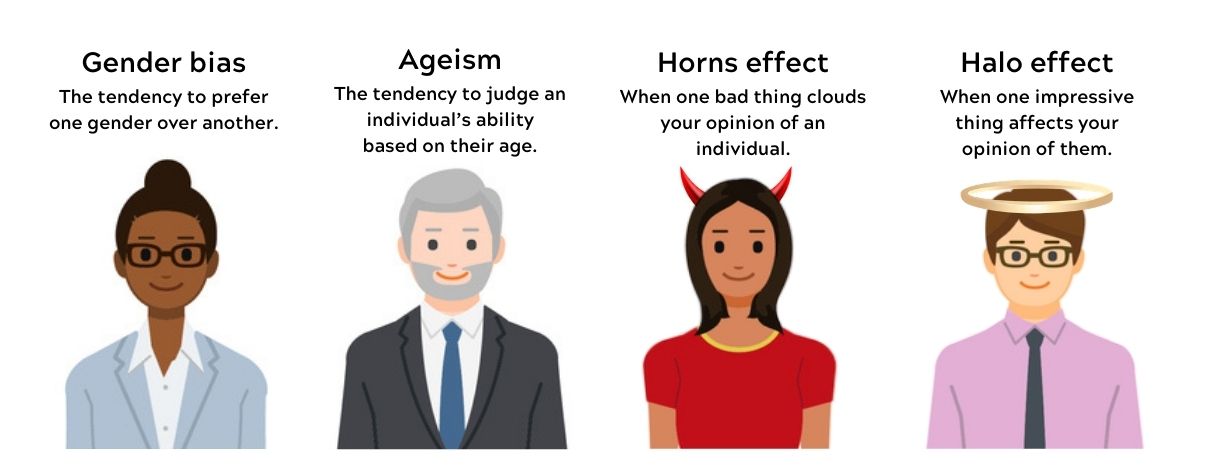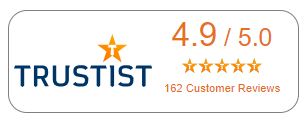How to Tackle Unconscious Bias in the Workplace
In recent years, many businesses have considered what can be done to make their workplace more inclusive.
The Employment Equality Act of 2010 ensures that employees are protected against discrimination in the workplace in relation to a list of protected characteristics, including gender, race, and sexuality. However, this doesn’t mean that all employees are given the same opportunities. This can be caused by unconscious bias.
In this article we will discuss what unconscious bias is, how to recognise your own bias, and steps to take to prevent unconscious bias.

What is unconscious bias?
Unconscious biases are prejudices that an individual can hold about any social group, without being aware of it.
It’s completely natural to hold certain unconscious beliefs. These biases are influenced by the world around you and your brain's natural tendency to sort information into categories.
Examples of unconscious bias in the workplace
Unconscious bias can affect any type of social group. From judgements based on age or ethnicity, to hiring a person who is a good ‘culture fit’.
The 11 types of unconscious bias in the workplace are:
- Gender bias – Gender bias is the tendency to prefer one gender over another.
- Ageism – The tendency to judge an individual’s ability based on their age.
- Name bias – Name bias is the tendency to judge people based on their name, typically favouring names of Anglo origin.
- Beauty bias – The belief that attractive people are more competent and successful. This can even include people’s height.
- Affinity bias - Also known as similarity bias, this is the tendency to connect with people who share similar interests or backgrounds.
- Confirmation bias - The tendency to search for information in a way that supports your first judgement.
- Attribution bias – Using prior knowledge about an individual to make up your perception of their future performance.
- Conformity bias – More commonly known as peer pressure.
- Halo effect – The halo effect is when one impressive piece of information about a person affects your opinion of everything else about them.
- Horns effect – The opposite of the halo effect, this is when one bad thing clouds your opinion of an individual.
- Contrast effect – The contrast effect is when your opinion of one thing is viewed through the lens of what came directly before. For example, comparing a potential candidate based on the performance of an earlier candidate.
How to tackle unconscious bias in the workplace
Now that we’ve covered the most common types of bias, what can you do to ensure these prejudices don’t occur in your business decision making?
Identify your own biases
The first thing to do before you can put a stop to unconscious bias, is to make yourself aware of your own prejudices.
Project Implicit have a number of Implicit Association Tests to help you identify your own unconscious biases.
Employing diverse recruiters
The best way to create a more diverse workforce is to have a team of recruiters from different backgrounds. Members of a diverse recruitment team will each bring different things to the search for new recruits and be less likely to discount potential candidates from certain social groups.
Name-blind recruitment
British citizens from ethnic minority backgrounds have to send, on average, 60% more job applications to get a positive response compared to white citizens and many people feel they need to change their name to be considered for a job.
Name-blind recruitment is the act of removing criteria that could unintentionally influence a manager’s decision when reviewing applications.
Define objective criteria for performance reviews
Performance reviews can often be subjective, with managers falling foul of many of the types of unconscious bias.
Most notably, affinity bias (favouring those with similar backgrounds), confirmation bias (assuming someone won’t be able to take on new projects based on their work on different tasks) and contrast bias (marking an individual down on their evaluation based on how they compare to their colleague, rather than how far they’ve come since their last evaluation).
To avoid these issues, define a list of criteria that each employee needs to meet and make sure that employees and managers know and understand the criteria in advance of the performance review.
Don’t sit with the same people every day
A seating plan can provide certain individuals with more opportunities, by virtue of simply sitting close to the boss.
You don’t need to start hot desking, but make sure you move around the area and make time to speak with different members of staff.
If there are groups of people that often work together, try to assign work to different combinations of employees to improve team dynamics and find out whether different people take the lead when given an opportunity.
Make your objective known
It’s not enough to just focus on yourself when eradicating unconscious bias in the office.
By informing the wider team and asking them to also be considerate, you can make everyone feel more able to participate.
Create a set of rules with the goal of giving everyone an equal opportunity, for example, no talking over other people. If someone makes a mistake, gently nudge the conversation back to what the other individual was saying.
The benefits of conscious inclusion
Increasing awareness of your own biases goes a long way towards:
- making your company a fairer place to work
- Improving employee engagement
- Reduce staff turnover
- Ensures that you truly have the best person in any role.
It can take a long time to make lasting change when introducing conscious inclusion, but it’s important to remember the reason for putting in the effort.





